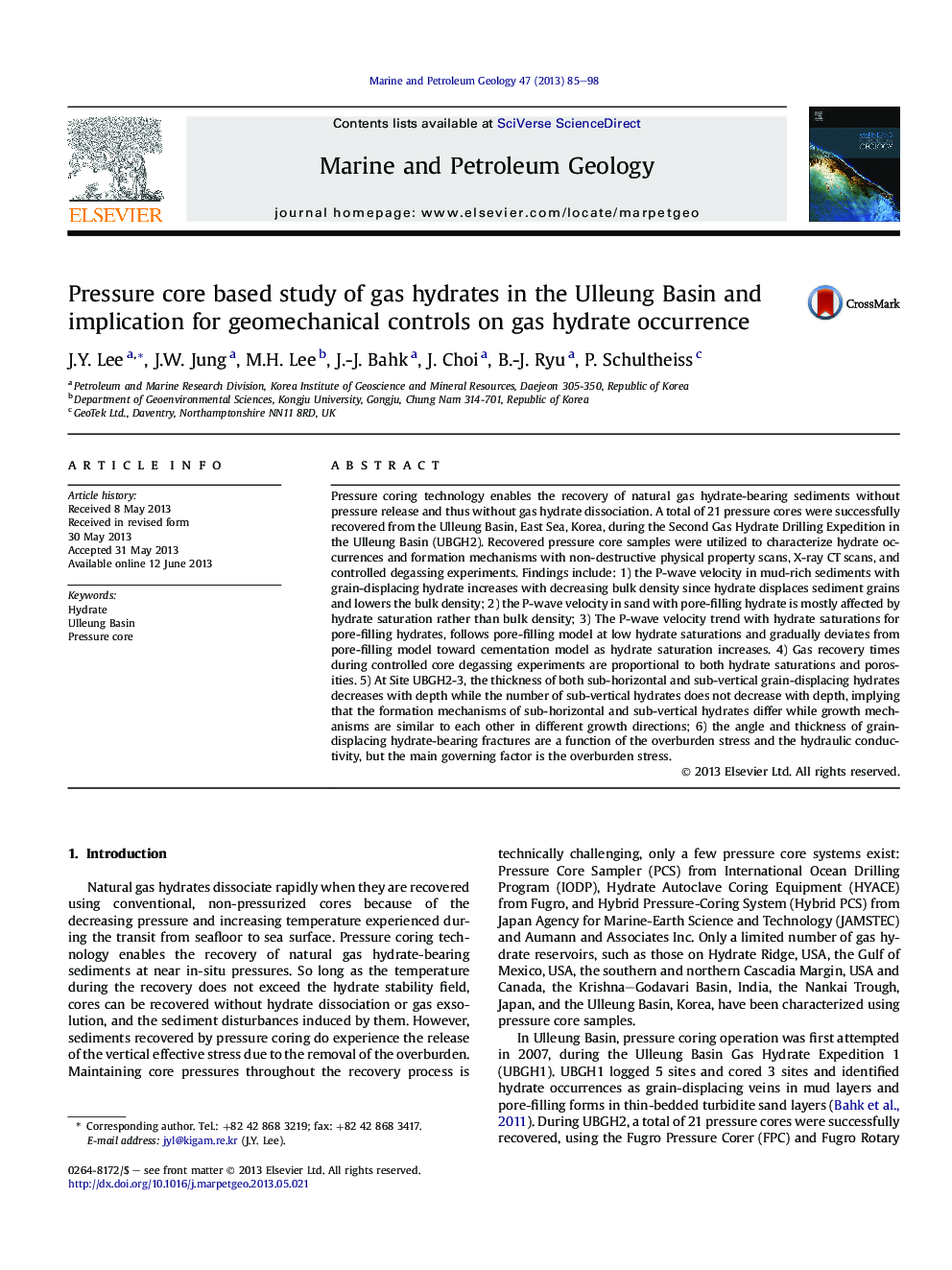| کد مقاله | کد نشریه | سال انتشار | مقاله انگلیسی | نسخه تمام متن |
|---|---|---|---|---|
| 4695745 | 1637177 | 2013 | 14 صفحه PDF | دانلود رایگان |

• Pressure core samples were utilized to characterize hydrate occurrences.
• P-wave velocity of grain-displacing GH show reversed trend with the bulk density.
• Grain-displacing GH dissociates in stages upon depressurization.
• Geometry of grain-displacing GH is mainly governed by stress and flow condition.
Pressure coring technology enables the recovery of natural gas hydrate-bearing sediments without pressure release and thus without gas hydrate dissociation. A total of 21 pressure cores were successfully recovered from the Ulleung Basin, East Sea, Korea, during the Second Gas Hydrate Drilling Expedition in the Ulleung Basin (UBGH2). Recovered pressure core samples were utilized to characterize hydrate occurrences and formation mechanisms with non-destructive physical property scans, X-ray CT scans, and controlled degassing experiments. Findings include: 1) the P-wave velocity in mud-rich sediments with grain-displacing hydrate increases with decreasing bulk density since hydrate displaces sediment grains and lowers the bulk density; 2) the P-wave velocity in sand with pore-filling hydrate is mostly affected by hydrate saturation rather than bulk density; 3) The P-wave velocity trend with hydrate saturations for pore-filling hydrates, follows pore-filling model at low hydrate saturations and gradually deviates from pore-filling model toward cementation model as hydrate saturation increases. 4) Gas recovery times during controlled core degassing experiments are proportional to both hydrate saturations and porosities. 5) At Site UBGH2-3, the thickness of both sub-horizontal and sub-vertical grain-displacing hydrates decreases with depth while the number of sub-vertical hydrates does not decrease with depth, implying that the formation mechanisms of sub-horizontal and sub-vertical hydrates differ while growth mechanisms are similar to each other in different growth directions; 6) the angle and thickness of grain-displacing hydrate-bearing fractures are a function of the overburden stress and the hydraulic conductivity, but the main governing factor is the overburden stress.
Journal: Marine and Petroleum Geology - Volume 47, November 2013, Pages 85–98